
"I have used a wide variety of secondaries and Jackson ImmunoResearch has consistently been the best. The fluorophores are bright and stable and their selective (x reactivity removed) secondaries have always shown species specificity in multiple labeling."
Janet Duerr, Ohio UniversityRating: 5.0
Examples D and E illustrate multiple labeling protocols that include a directly labeled and an unlabeled primary antibody from the same host species. It is advisable to incubate the less abundant primary first. In Example D, the directly labeled primary antibody is incubated first, then blocked with Fab fragments prior to applying the unlabeled primary antibody.
If the unlabeled primary antibody is incubated first (Example E), double labeling can be achieved without using Fab fragments. Following incubation with the labeled secondary antibody, normal serum is used to block open binding arms of the secondary, preventing capture of the labeled primary.

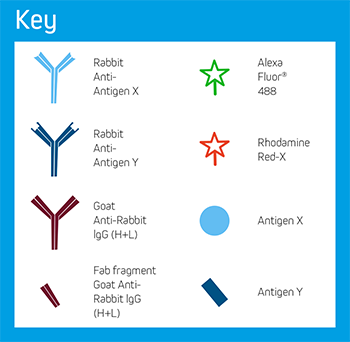
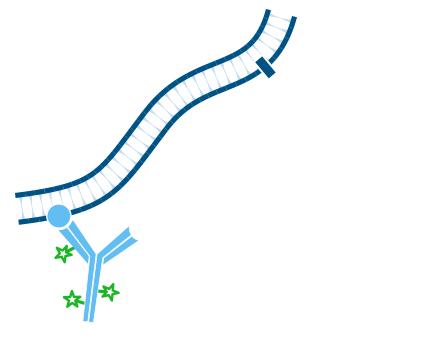
Step 1. After blocking with normal serum, incubate with conjugated primary antibody, in this example Alexa Fluor® 488-Rabbit Anti-Antigen X. Wash.
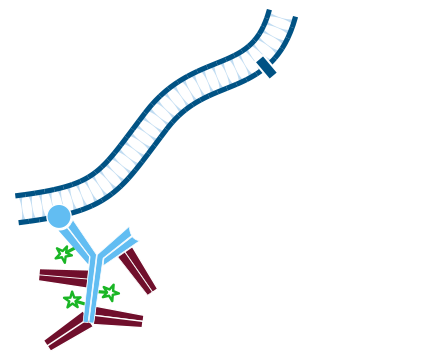
Step 2. Incubate with an excess of unconjugated Fab Goat Anti-Rabbit IgG (H+L). Wash.
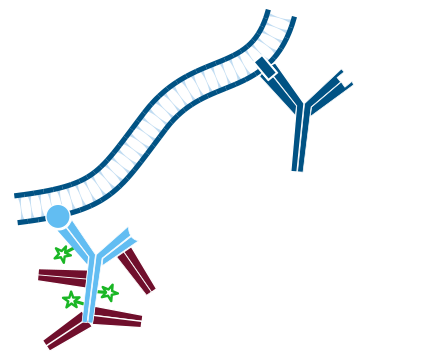
Step 3. Incubate with the unconjugated primary antibody, in this example Rabbit Anti-Antigen Y. Wash.
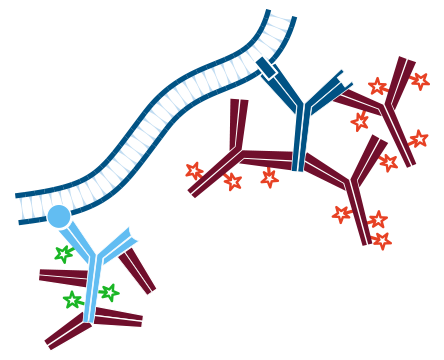
Step 4. Incubate with conjugated secondary antibody, in this example Rhodamine Red™‑X-Goat Anti-Rabbit IgG (H+L). Wash.

| Step 1. | - |
|---|---|
| Step 2. | - |
| Step 3. | - |
| Step 4. | - |
A detection method using conjugated Fab fragments and whole IgG secondary antibodies.
A blocking method using unconjugated fab fragments to “change” the species of one antibody.
A blocking method to allow use of two same species primary antibodies following blocking for endogenous Ig with unconjugated fab fragments.
A blocking method using whole Ig antibodies to prevent non-specific labeling.
Background staining may be observed if a labeled secondary antibody is not adsorbed to minimize recognition of endogenous tissue Ig.
View Blocking Protocol
FabuLight antibodies are Fab fragment secondary antibodies specific to the Fc region of IgG or IgM primary antibodies.
Read More